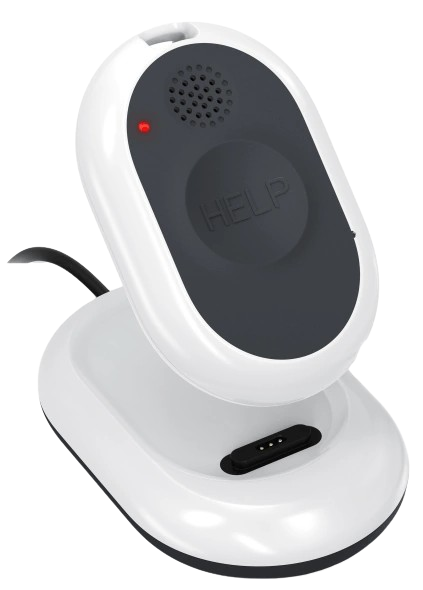As Canada is divided into federal, provincial and territorial jurisdictions here is the legislation and policy pertaining to workers and lone workers in Alberta, including the associated work alone regulations.
If an employer has staff who work alone, the OHS code requires the employer to conduct a hazard assessment, implement safety measures, maintain contact at intervals appropriate to the nature of the work and have an effective way of communicating with their employer during an emergency.
On This Page
Our Guide To Lone Worker Safety Policy And Legislation In Alberta
As being a lone worker can be considered dangerous and a hazard in Alberta it is important for employers of lone workers to adhere to the policies and legislation set by Alberta provincial law and Canadian federal law.
On this page we will highlight the most important details to consider when employing lone workers in Alberta and how to adhere to the hazard assessment and control requirements defined by the Occupational Health & Safety Code (commonly referred to as OHS).
How Alberta Defines A Lone Worker
In Alberta, a lone worker is defined by 2 points: they are working alone and they do not have assistance readily available.
Working alone is simply defined as someone who is working by themselves.
A worker may be considered not to have assistance readily available based on three factors: awareness, willingness, and timeliness.
- Awareness: will another person who may be able to provide assistance to a lone worker be aware of the lone worker's needs?
- Willingness: is it reasonable to expect that another person will be able to provide helpful assistance if a lone worker is in need?
- Timeliness: will assistance be provided within a reasonable period of time
If the answer to the above questions are no while they are working alone, they may be officially considered a lone worker.
Employing A Lone Worker In Alberta
When employing workers in Alberta, it is important to consider if they are a lone worker based on their responsibilities. If your worker's responsibilities involve working alone without routine interaction with customers and without visibility from the public, they are likely to be considered a lone worker.
Because working alone can be considered dangerous or hazardous, employers of lone works must meet the hazard assessment and control requirements specific in the OHS Code. Summarized, these requirements involve:
- Conducting a hazard assessment to identify existing or potential hazards arising from the conditions of the lone worker's responsibilities/work.
- Implement appropriate measures to eliminate or control the hazards.
Learn How You Can Protect Your Employees With Loneworker.com

With Loneworker.com you can be equipped with the knowledge and the means to protect your employees and protect your business. Contact us today to learn more about how Loneworker.com can protect you and your employees.
How The Safe Lone Worker App Can Protect Alberta Lone Workers And Employers
An important part of keeping your lone workers safe is providing quick and easy communication and monitoring in the event of an emergency.
With the Safe Lone Worker App, you can easily monitoring your employees' while they are carrying out their responsibilities, even if they are travelling alone. The app works in tandem with a man down alert button that can be pressed in the event of an emergency. If the button is pushed, the lone worker will be immediately put into contact with a monitoring center that can send help immediately and contact the employer.
Alberta Lone Worker Policies
The content below has been included as a direct reference for lone worker policies as provided by Alberta. This content has been included to serve as more detailed information and an easy reference point. This information is provided for your convenience, but should not be taken as legal advice. We encourage you to conduct your own research into the laws and regulations of your jurisdiction before making any decisions.
OHS Information For Employers And Workers
This resource provides information about Alberta’s OHS (Occupational Health & Safety) Code requirements when a worker is working alone.
Key Information
- Working alone, in the context of OHS legislation, refers to workers who are working by themselves at a site where assistance is not readily available if there is an injury, illness or emergency.
- Employers must fulfill several requirements in the OHS Code if they have workers who work alone. - Additional requirements apply to retail fuel and convenience store workers.
When Is A Worker Working Alone?
The working alone requirements in Part 28 of Alberta’s OHS Code apply when both of the following conditions are met:
- Workers are working by themselves.
- Assistance is not readily available to the worker if there is an injury, illness or emergency
- Awareness: Will other people capable of providing assistance be aware of the worker’s needs?
- Willingness: Is it reasonable to expect that these other people will provide helpful assistance?
- Timeliness: Will assistance be provided within a reasonable period of time?
What Does "Readily Available" Meant?
Three factors determine whether assistance is “readily available” in the event of an injury, illness or emergency:
The assessment of whether assistance is readily available must consider the risk associated with the work (e.g. the type of work, the remoteness of the location, the hazards that are commonly present, etc). If workers face hazards that pose a high risk of serious injury, the requirement that assistance be “readily available” may actually need to be treated as “immediately available”.
Learn How The Lone Worker Monitoring Device Works.

By using a Safe Lone Worker Man Down alert you can monitoring your employees and keep them safe even while they are travelling or working on their own.
Our devices are equipped with cellular and GPS technology to provide service all across Canada and the United States of America.
Contact us today to get your Safe Lone Worker Man Down Alerts for you and your business.
Who Works Alone?
Many types of workers could be considered to be working alone under OHS legislation. Some examples include:
- Workers who handle cash (such as convenience store clerks, retail and food outlet workers, and taxi drivers).
- Workers who travel to meet clients (such as home care workers, social workers, and bylaw enforcement officers).
- Workers who do hazardous work but have no routine interaction with customers or the public (such as workers in the logging and oil and gas industries).
- Workers who travel alone but have no routine interaction with customers or the public (such as truck drivers and business people who are on the road).
- Workers who are at risk of a violent attack because their work site is out of public view (such as security guards and custodians).
Employer Requirements
Because working alone is considered a hazard, employers of workers who work alone must meet the hazard assessment and control requirements specified in Part 2 of the OHS Code. They must:
-
Conduct a hazard assessment to identify existing or potential hazards arising from the conditions of the work. Employers must repeat this hazard assessment:
- - At reasonably practicable intervals to prevent unsafe and unhealthy working conditions.
- - When a work process or operation changes or a new work process is introduced.
- - Before significant additions or alterations are made to a work site.
- Implement appropriate measures to eliminate or control the hazards.
- Organizing work schedules so workers don’t have to work by themselves without assistance being readily available.
- Rearranging the physical layout of the work site so workers can maintain contact with one another to ensure assistance can be provided.
- Provide the worker with an effective means of communication with the employer or a person designated by the employer.
- -This must be a radio, a phone, or some other effective means of electronic communication.
- Contact (or have the designate contact) the worker at regular intervals appropriate to the hazards associated with the work.
Affected workers must be involved in the hazard assessment and in the elimination or control of the hazards that are found.
If possible, eliminate the hazard of working alone. Examples of how employers can do this include:
However, if it is not reasonably practicable to eliminate the hazard of working alone, employers will need to implement controls to address the hazard.
Under Part 28 of the OHS Code, employers with a worker who works alone are also required to:
If effective electronic communication is not practicable, the employer or designate must visit the worker, or the worker must contact the employer or designate at intervals appropriate to the nature of the hazard.
Video Surveillance Cameras
Maintaining contact with workers can potentially be achieved through the use of video surveillance cameras. The employer’s hazard assessment should assess whether such a system would enable effective communication and regular contact by the employer with workers.
Special Requirements For Retail Fuel And Convenience Store Workers
In addition to the controls required by the employer’s hazard assessment and Part 28 of the OHS Code, if a worker at a gas station, retail fuelling outlet, or convenience store is working alone, the employer must provide a personal emergency transmitter monitored by the employer or the employer’s designate. The personal emergency transmitter must be on the worker at all times while working alone.
Important Questions For Lone Worker Employers
- Do you have policies that require meetings with clients or members of the public to be held at a safe location?
- Are workers required to file a travel plan whenever they have to travel to a remote location in or outside of Alberta?
- Do you have a procedure in case a worker who is travelling alone in Alberta doesn’t arrive at their destination?
- Is there a procedure for workers to check in before and after any planned activities at a work site?
- Are workers instructed to take adequate rest breaks when they are travelling alone in Alberta?
- Do you have a security system at your Alberta work site, with signs prominently displayed to advertise its presence?
- Is the entrance to your Alberta work site in view of people who might pass by?
- Is there sufficient lighting to illuminate secluded areas?
- Do you limit the amount of cash kept on hand at the Alberta work site?
Examples
The following examples describe typical workplace situations where someone is working alone. Can you tell whether the working alone requirements under OHS legislation apply?
Remember, the requirements apply when work is being conducted and assistance is not readily available if there is an injury, illness or emergency.
Example 1
A worker is the only staff member on duty at a restaurant in a mall food court. Other workers are present at nearby restaurants in the food court.
Although the worker is working by themselves, the workers at the nearby food outlets could reasonably be expected to provide or call for assistance in case of an emergency. Thus, the working alone requirements of the OHS Code would not apply in this situation.
However, a lone worker at a restaurant along a highway would be considered to be “working alone” because the worker would have no way of getting assistance in an emergency.
Example 2
A worker equipped with a mobile phone is working alone in an area where the worker cannot be seen or heard by anyone capable of offering assistance.
Even though the worker has a mobile phone, assistance is not considered to be “readily available”, because the worker cannot be seen or heard by anyone capable of offering assistance (such as if the worker becomes unconscious). The working alone requirements apply in this case.
As such, the employer is required to conduct a hazard assessment to identify existing or potential hazards arising from the conditions and circumstances of the worker’s work.
The employer must also establish an effective means of communication, including contact at appropriate intervals, between the worker and people capable of rendering or calling for assistance if needed.
Note that in this example, although the hazard assessment might show that the mobile phone is an effective means of communication, it could also potentially reveal that an alternative is needed (such as if cellular service in the area is poor or non-existent).
Example 3
In the course of making deliveries, a worker is driving on Highway 2 between Calgary and Edmonton.
During daytime hours, other motorists would likely be able to provide or call for assistance in a timely manner if this worker needed help while driving on this major well-travelled highway. As such, the working alone requirements would not likely apply. However, if the worker were driving on this highway very late at night, working alone requirements could apply.
In addition, if the worker were driving on a remote road with very infrequent traffic, and it would be unreasonable to expect timely help from other motorists, then the working alone requirements would apply.
Steps Employers Can Take
To help employers figure out what actions they can take to ensure the health and safety of their workers who are working alone, a list of some potential questions is provided at the end of this bulletin.
Employers can use this list as a guide in developing their own list of questions specific to their own work site, which can in turn help highlight issues that may need to be addressed before people can work alone safely.
References
Government of Alberta. Working Alone. 2022.
“Occupational Health and Safety (OHS).” Alberta government website, 13 Dec. 2024.
Government of Canada, Canadian Centre for Occupational Health and Safety. Working Alone - General. 10 May 2024.
Loneworker.com is an aggregate resource and is not directly affiliated with government policies, legislation, or guidelines. Our site is intended to gather and display information for your use, but you are encouraged to conduct your own research.
Alberta Lone Worker Resources

OHS Contact Centre
Anywhere in Alberta
- 1-866-415-8690
Edmonton and surrounding area
- 780-415-8690
Deaf or hard of hearing (TTY)
- 1-800-232-7215 (Alberta)
- 780-427-9999 (Edmonton)

Lone Worker And Employment Facts In Alberta
2.45 Million People Are Employed In Alberta
13% of Employment In Alberta Is From Mining, Quarrying, and Oil and Gas Extraction Industries.
Alberta Has The 2nd Highest Employment Rate of Canadian Provinces
Affordable Monitoring For Lone Workers In Alberta

-
 Monitoring Your Employees' Safety
Monitoring Your Employees' Safety
-
 GPS Tracking And Monitoring
GPS Tracking And Monitoring
-
 Man Down Panic Alerts
Man Down Panic Alerts
-
 24/7 Protection Anywhere
24/7 Protection Anywhere
Lone Worker Legislation
Lone Worker Safety Policies And Legislation By Province
-
 Alberta Provincial Safety Policies And Legislation
Alberta Provincial Safety Policies And Legislation
-
 British Columbia Provincial Safety Policies And Legislation
British Columbia Provincial Safety Policies And Legislation
-
 Manitoba Provincial Safety Policies And Legislation
Manitoba Provincial Safety Policies And Legislation
-
 New Brunswick Provincial Safety Policies And Legislation
New Brunswick Provincial Safety Policies And Legislation
-
 Newfoundland and Labrador Provincial Safety Policies And Legislation
Newfoundland and Labrador Provincial Safety Policies And Legislation
-
 Nova Scotia Provincial Safety Policies And Legislation
Nova Scotia Provincial Safety Policies And Legislation
-
 Ontario Provincial Safety Policies And Legislation
Ontario Provincial Safety Policies And Legislation
-
 Prince Edward Island Provincial Safety Policies And Legislation
Prince Edward Island Provincial Safety Policies And Legislation
-
 Quebec Provincial Safety Policies And Legislation
Quebec Provincial Safety Policies And Legislation
-
 Saskatchewan Provincial Safety Policies And Legislation
Saskatchewan Provincial Safety Policies And Legislation
-
 Northwest Territories Provincial Safety Policies And Legislation
Northwest Territories Provincial Safety Policies And Legislation
-
 Nunavut Provincial Safety Policies And Legislation
Nunavut Provincial Safety Policies And Legislation
-
 Yukon Provincial Safety Policies And Legislation
Yukon Provincial Safety Policies And Legislation







